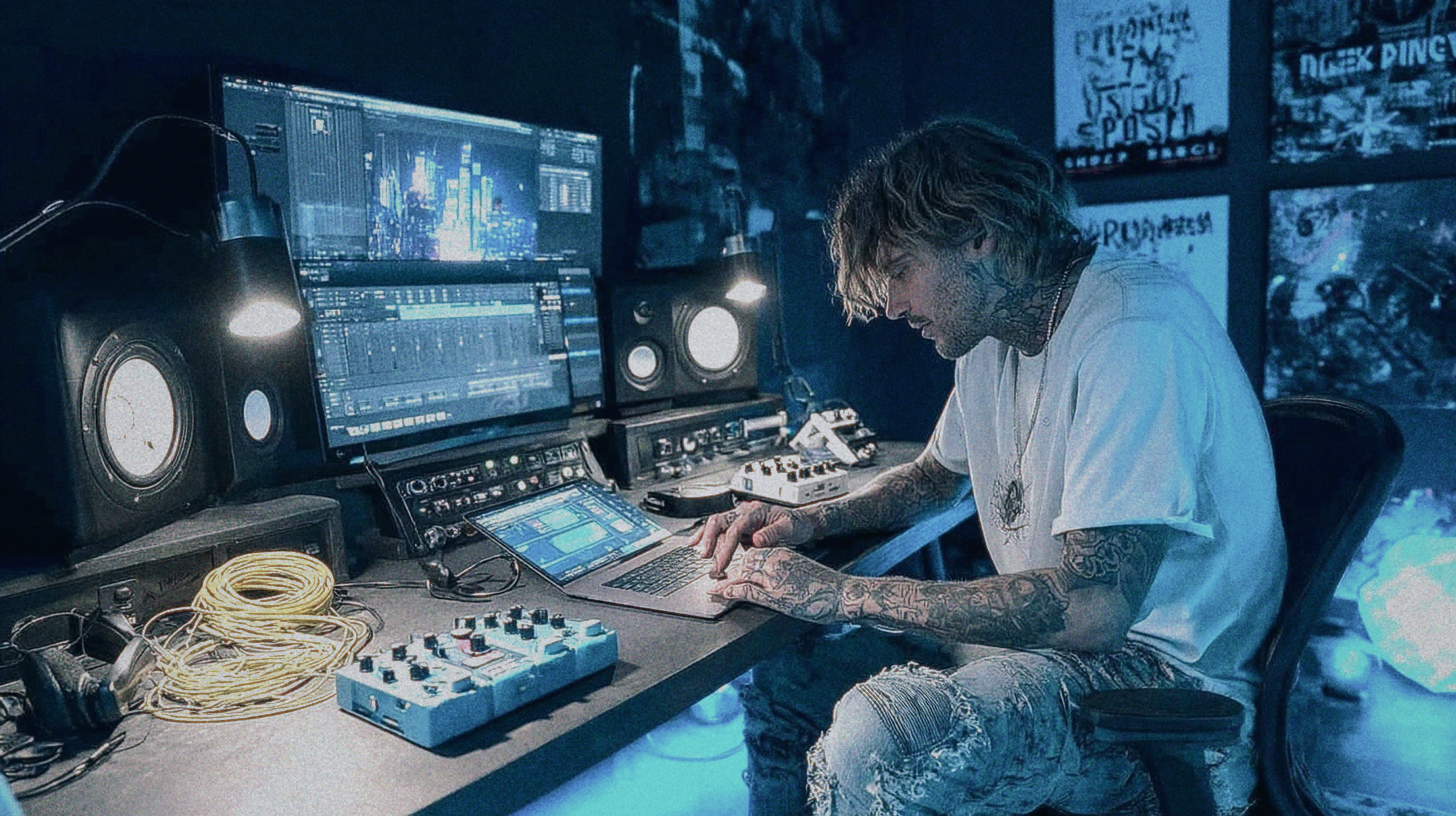
Metal Multitracks: Dissect Pro Mixes and Find Your Sound
Nail The Mix Staff
Here’s a total game-changer for anyone serious about mixing heavy music: multitracks. If you're grinding away in your DAW, trying to get your metal productions to sound as colossal as the records you love, then getting your hands on professional multitracks is less of a "nice-to-have" and more of a "you-gotta-do-this" situation. Forget just tweaking presets; we're talking about really understanding what makes a killer metal mix tick, from the ground up.
So, What Exactly Are Multitracks, And Why Should Metal Producers Care?
You've heard the final, mastered versions of your favorite metal anthems a million times. But what if you could peel back the layers? That's what multitracks offer.
Beyond the Stereo Bounce: The Raw Ingredients
Simply put, multitracks are the individual, isolated recordings of every instrument and vocal from a song. Think raw kick drum mics (in, out, sub), snare top and bottom, individual tom mics, stereo overheads, room mics, multiple guitar tracks (maybe DIs and amped signals), bass DI, bass amp, lead vocals, backing vocals, programming layers… everything. Each element is on its own track, exactly as it was recorded, before any (or much) mixing has been applied.
For metal producers, this is gold. Why? Because metal is dense. It’s a sonic battlefield of downtuned guitars, blasting drums, and aggressive vocals. Trying to learn how to make all that work together by just listening to a final stereo mix is like trying to learn how to build an engine by just looking at a car. Multitracks let you pop the hood and see every single part.
The Ultimate Metal Mix Training Ground
Working with pro multitracks is like having a private lesson with the engineers who tracked and mixed your favorite bands. You get to:
- Deconstruct: Hear exactly what that ripping guitar tone sounds like in isolation versus in the mix.
- Experiment: Try out your own processing ideas on pro-quality source material.
- Practice: Hone your skills without the pressure (and expense) of booking studio time or tracking a full band yourself.
Getting Your Hands Dirty: Practical Uses of Multitracks for Metal Mixes
Okay, so you’ve got a session folder full of WAVs. Now what? This is where the real fun (and learning) begins.
Dissecting Crushing Metal Guitar Tones
Guitars are the backbone of most metal. With multitracks, you can solo those quad-tracked rhythm guitars and really dig in.
- DIs vs. Amped Tones: Many sessions include both the direct input (DI) signal and the miked-up amp tone. This is huge for understanding how much of the "tone" is the amp versus how it's captured. You can even use the DIs to practice re-amping with your own gear or plugins like the Neural DSP Archetype series (Nolly, Gojira, Plini), STL ToneHub, or various Joey Sturgis Tones guitar amp sims.
- Layering and Panning: How wide are those rhythms panned? Are there subtle, cleaner layers tucked underneath for definition? Multitracks reveal all.
- EQ Moves: Solo the guitars and listen to how they’re EQ’d. Are they scooping mids heavily, or is it more surgical? How are they dealing with fizz? You can learn a ton about carving out space and adding bite by analyzing (and then trying to replicate or improve) these EQ decisions. For a deeper dive into shaping those six-strings, check out our EQ strategies for mixing modern metal. Maybe they're using something like a FabFilter Pro-Q 3 for surgical cuts or a Pultec-style EQ for broad tonal shaping.
Deciphering Brutal Drum Sounds
Modern metal drums are complex beasts. Multitracks let you hear every component.
- The Shell Game: Listen to the kick in, kick out, snare top, snare bottom, and individual tom mics. How much of the "thwack" and "boom" comes from each? How are they phase-aligned?
- Samples or No Samples?: It's common in metal to blend samples with live drums. Multitracks can show you how subtly (or not so subtly) this is done. You might see a dedicated trigger track or be able to A/B the acoustic sound with what sounds like a Slate Digital Trigger 2 or Superior Drummer 3 sample layered in.
- Overheads & Rooms: How much of the cymbal sound and overall kit "space" comes from the overheads versus dedicated room mics? Are the room mics heavily compressed to bring out that explosive sound? This is where you can really learn about drum bus compression and parallel processing. Speaking of which, if you want to get your drums to slam, understanding metal compression secrets is crucial. You might see a Distressor or an 1176-style plugin like the Waves CLA-76 being used aggressively on a room mic bus.
Achieving Vocal Clarity & Aggression in the Chaos
Metal vocals have to cut through a wall of sound. Multitracks show you the tricks.
- Stack 'Em High: How many layers make up that lead vocal? Are there doubles panned wide? Subtle harmonies? Whispers or grit layers tucked underneath?
- Processing Chains: Solo the lead vocal and bypass plugins one by one (if the session includes them). You’ll see common chains: subtractive EQ (FabFilter Pro-Q 3 again, perhaps), then compression (maybe an LA-2A style like the Waves CLA-2A for smoothness or an 1176 for aggression), then perhaps some saturation (Soundtoys Decapitator is a favorite), and finally, time-based effects like delays (Soundtoys EchoBoy) and reverbs (Valhalla VintageVerb).
Low-End Theory: Bass, Kick, and Guitar Interplay
The low end in metal is a battlefield. Multitracks help you understand the relationships.
- Who Owns What?: Where does the kick's sub-bass end and the bass guitar's low-mid punch begin? How are the low-tuned guitars fitting in without turning everything into mud?
- Sidechaining & EQ: You might find sidechain compression from the kick to the bass, or very specific EQ notches on guitars and bass to make space for each other. A multiband compressor like FabFilter Pro-MB can be a lifesaver here.
Level Up Your Mixing: Where Nail The Mix Comes In
Now, dissecting random multitracks is cool, but imagine getting professionally recorded multitracks from massive metal bands like Periphery, Gojira, Meshuggah, or Lamb of God every month. And then, watching the actual producer or mixer who worked on that record mix it from scratch, live, explaining every single decision, every plugin choice (like why they reached for a specific API 550 EQ or a dbx 160 compressor emulation), every fader move.
That’s exactly what Nail The Mix offers. It’s not just about getting the files; it’s about getting the guided tour through a pro mix, by the pro themselves. You see their templates, their bus routing, their gain staging, how they tackle problems, and how they enhance what's already there. It’s an insane accelerator for your mixing skills. If you're ready to stop guessing and start learning the techniques that make modern metal sound so powerful, this is how you do it. You can unlock your sound and learn to mix modern metal beyond presets with us.
Quick Guide: Common Multitrack Formats & Your DAW
When you get multitracks, they'll almost always be WAV files. Pay attention to:
- Sample Rate: Usually 44.1kHz or 48kHz, sometimes 88.2kHz or 96kHz for super high-fidelity. Make sure your DAW project matches.
- Bit Depth: Typically 24-bit, which gives you plenty of dynamic range to work with.
- DAWs: Doesn't matter if you're in Pro Tools, Reaper, Cubase, Logic Pro X, Studio One, or something else. Importing WAVs is standard practice. Just drag 'em in, label 'em, color-code 'em, and get to work.

100+ Insanely Detailed Mixing Tutorials
We leave absolutely nothing out, showing you every single step
Pro Tips for Working with Multitracks Like a Boss
Whether you're using NTM sessions or other multitracks, keep these in mind:
Organization is Your Best Friend
Seriously. When you've got 80+ tracks for a dense metal song, clear naming conventions (e.g., "Kick In," "Snr Top," "GTR L1," "GTR R1," "LD VOX MAIN"), color-coding (drums blue, guitars red, vocals green, etc.), and using group/bus tracks will save your sanity.
Gain Staging: The Unsung Hero
Before you even think about reaching for an EQ or compressor, make sure your tracks are at healthy levels. Aim for your channel faders to be around unity (0dB) with peaks hitting somewhere around -18dBFS to -12dBFS on your meters. This gives your plugins optimal room to work.
Reference Tracks: Your Sonic GPS
Always have a couple of commercially released, well-mixed metal tracks that you love the sound of loaded into your session. A/B constantly. How does your kick compare? Are your guitars as wide? Is your vocal sitting similarly in the mix? This keeps you grounded.
Don't Be Afraid to Experiment (and Screw Up!)
This is a safe space! Try that insane parallel compression idea on the drums. See what happens if you distort the hell out of a vocal double. Mangle a synth pad with a bitcrusher like a Decimort 2. Some of the coolest sounds in metal came from happy accidents. Multitracks let you experiment without consequences to an original recording.
Forge Your Own Path
Working with multitracks is, without a doubt, one of the fastest ways to improve your metal mixing chops. You get to peek behind the curtain, learn from the best, and apply those techniques to high-quality source material. So go grab some multitracks, fire up your DAW, and start forging those killer metal mixes you've always dreamed of. Your journey to a heavier, punchier, and clearer sound starts now.
Get a new set of multi-tracks every month from a world-class artist, a livestream with the producer who mixed it, 100+ tutorials, our exclusive plugins and more
Get Started for $1




